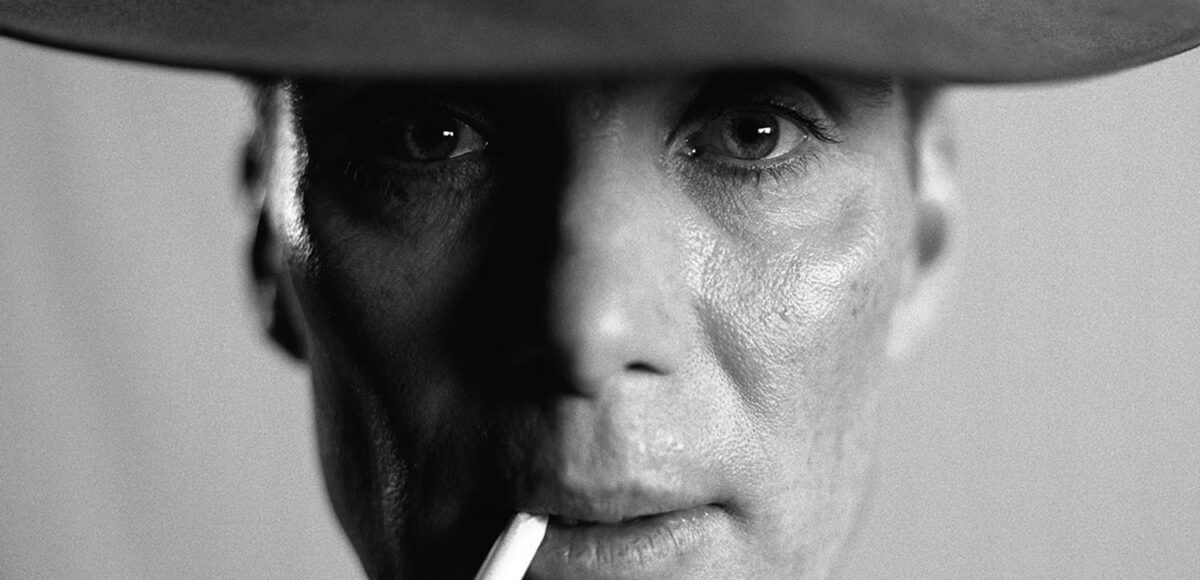“Oppenheimer,” the extraordinary film written and directed by the redoubtable Christopher Nolan, tackles not just the history of one man and the seminal event that came to define him, but also the complex intersection of science, politics and the cult of personality. Rarely have I left a movie feeling smarter than when I went in, but “Oppenheimer” is just such a film and it elevated my thinking, especially in regards to the science of politics and the politics of science. More amazingly, I still don’t understand physics beyond Newton’s third law of motion that “every action has an equal and opposite reaction.” And yet, curiously, that quote also applies to the emotional reactions of the protagonists in the life of J. Robert Oppenheimer, father of the Atomic Bomb.
Based on what is arguably considered the best biography written about Oppenheimer, “American Prometheus: The Triumph and Tragedy of J. Robert Oppenheimer” by Kai Bird and Martin J. Sherwin who spent 25 years researching and writing it, Nolan took this base material and focused on the successful attempt to dismantle Oppenheimer’s reputation, building the background by going backwards and forwards in Oppenheimer’s life. Much like Prometheus, the Greek god of fire who was punished by Zeus for giving fire to humans, the post World War II life of Robert Oppenheimer doomed him to serve penance for what many saw as conceit compounded by his many human frailties—sexual, political and intellectual. But this modern day Prometheus who unleashed the power of atomic energy could be more closely associated with Icarus, the mortal who dared to fly too close to the sun. In Greek mythology, Icarus and Daedalus, his father, devised wings made of threads, feathers and wax to flee their labyrinthian prison. His father warned him to beware of the sins of hubris and complacency, advising him not to fly too high lest the sun melt his wings. But Icarus refused to listen and the sun melted his wings, whereupon he fell into the sea and drowned. And a labyrinth of storytelling is what this movie is.
Tracking between time frames in his life, Nolan smoothly transitions from the 1953-54 Atomic Energy Commission (AEC) Kangaroo Court instigated by AEC Chairman Lewis Strauss to relieve Oppenheimer of his security clearance, to Oppenheimer’s early career as he finds his way to theoretical physics in England and Germany. From his ambivalent dabbling in left wing and Communist circles, to his leadership in the Los Alamos branch of the Manhattan Project, the vast, decentralized program to harness nuclear fusion and create enough energy to power an atomic bomb, and the consequences of Strauss’s harassment of an intellectual foe with a still deep base of support from the scientific heavyweights of the time. In poker terms, this is a study of the consequences of overplaying your hand. It is a complicated story centered on a complex individual who is understood by many and misunderstood by most.
Oppenheimer’s initial focus was in chemistry, his major at Harvard, but he soon found his way to physics and pursued that course at Cambridge. It was there that he discovered he loathed lab studies and was unsuited for experimental physics. An encounter with Max Born (Nobel Prize 1959) led him to the University of Göttingen in Germany where the field of theoretical physics and quantum mechanics were starting to take hold. Under the tutelage of Born, Oppenheimer received his PhD in 1927. It was here that he encountered and befriended future theoretical physics giants such as Werner Heisenberg and Pascual Jordan, both pioneers in quantum mechanics and future Nazis. Also with him at Göttingen were Edward Teller and future Nobelists Erwin Schrödinger (as in the cat), Paul Dirac, Wolfgang Pauli and Enrico Fermi. Fermi would later lead the University of Chicago section of the Manhattan Project; Teller would join Oppenheimer in Los Alamos.
Returning to the United States, Oppenheimer received appointments at both CalTech and Berkeley. His residency at Berkeley was significant both for his championing and establishing a group focusing on theoretical physics, where none previously existed, and his association with experimental physicist Ernest O. Lawrence, the pioneer of the cyclotron that would be instrumental in developing the atomic bomb. It was also at Berkeley, a bastion of left wing ideology long before the 1960s, that Oppenheimer flirted with Communism, never joining but always cavorting. His brother Frank, urged on by his wife at the time, joined, and Oppenheimer’s lover, the volatile Jean Tatlock, was an active member. Oppenheimer’s political leanings were decidedly to the left of center, possibly far left, but his ambivalence was probably more fueled by his avoidance of being identified as one thing or another. Thus, all sides of the pro and anti equation thought he was something he wasn’t.
As war started to rear its head in Europe and rumors of Jewish annihilation in Nazi Germany began to surface, Einstein, now living in the United States, wrote a letter to President Roosevelt warning him that Germany was researching the use of uranium in bombs and that the U.S. needed to begin such a project immediately. Thus were born the seeds of the Manhattan Project, a multi-pronged, rather decentralized program to harness the new physics of the atom into practical military usage. General (or soon to be) Leslie Groves was appointed to head the project and choose the sites for research as well as those individuals to head up each division. In typical Army thinking, Groves previous experience was in the construction of the Pentagon, something that was deemed suitable experience for supervising a high level physics project. But his skill area was actually in choosing the right people to head each program and he chose Oppenheimer, a curiously counter-intuitive selection based on his assumed politics and lack of managerial expertise, for the Los Alamos project, a site suggested by Oppenheimer.
Cutting back and forth between the history of Los Alamos and the creation of the atomic bomb and events that would be his undoing after the war, Nolan creates an urgency that lends a thriller aspect to the film that leaves the viewer even more invested in Oppenheimer the man. Nolan leads us back into the ugliness of the one-sided hearing in 1953 orchestrated by Lewis Strauss, chairman of the AEC, to determine the continuation of Oppenheimer’s security clearance. The committee, fed by secret FBI files and testimony by Edward Teller against Oppenheimer, refused to renew his clearance. There would be consequences for Strauss, told in magnificently filmed black and white sequences as the Senate hearings for his proposed appointment as Eisenhauer’s Commerce Secretary in 1959 are relived with Strauss facing some of the same kinds of hostile rhetorical questions his earlier committee posed to Oppenheimer
It is Strauss’s animus that shades so much of the film. By the time they first meet, it is after the war and Strauss offers the now famous and lauded Oppenheimer the directorship of the Institute for Advanced Study in Princeton, long the home of Einstein. It is here that Strauss’s multi-pronged hostility takes root when he is convinced that Oppenheimer turned Einstein against him. Whether this actually happened or not, what is unmentioned is that Strauss, a Trustee of the Institute, was, himself, a candidate for the directorship. Losing it may have been hard (he was 5th choice) but having to give it to a left winger like Oppenheimer was a humiliation, but only the first. Strauss, a Jew committed to many religious organizations, was disdainful of Oppenheimer’s secular attitude. A wealthy, self-made man without a college education, Strauss was both proud and defensive of his origins.
Strike two came later when Oppenheimer, as a member of the General Advisory Committee of the newly formed AEC ridiculed Strauss’s position that the humanitarian provision of radio isotopes to our allies was a security risk. Worse, the full AEC board, of which Strauss was a member, voted four to one to release the isotopes, leaving Strauss on the fringes.
Returning to the Los Alamos years, Oppenheimer, Oppie as he was affectionately called, made sure that Groves’ dictum that all research be compartmentalized for security reasons was followed, at least in practicality if not in spirit. Alien to Oppenheimer’s nature, he created committees and subgroups across divisions that discussed relevant findings that could dovetail into furthering the work and speeding their results.
As chronological as this retelling may be, the most important takeaways about Oppenheimer’s personality are his inclusiveness and ability to stay out of the way of the men he hand picked. His brilliance, as viewed by others, was his incisive mind; but from my standpoint, his brilliance was in recognizing his own intellectual shortcomings and refusing to interfere in arenas where others had skills that surpassed his own. Of the scientists he chose to join him in Los Alamos, seventeen would go on to win Nobel Prizes. Abraham Pais, a colleague of Oppenheimer’s at the Institute for Advanced Study, said of him “there was no greater satisfaction for him than to see such efforts bear fruit and then to tell others of the work that someone had done.” (“J. Robert Oppenheimer: A Biographical Memoir” by H.A. Bethe. National Academy of Sciences.)
Oftentimes accused of arrogance, I believe it was more a recognition of his own worth that may have grated on those who did not fly in his circle and Strauss was one who did not. Humility is generally not a characteristic associated with genius. To quote David Lillianthal, first chairman of the AEC: “He was the only authentic genius I have ever met.”
But there is no doubt that our modern day Icarus flew too close to the sun. He was against the creation of the Hydrogen Bomb and nuclear proliferation, both loudly supported by Edward Teller and Lewis Strauss. Never apologizing for the use of the atomic bomb on Japan, Oppenheimer campaigned against its further implementation. Teller never forgave Oppenheimer for not pursuing his model of the Hydrogen Bomb at Los Alamos despite the fact that Oppenheimer allowed him to continue his research on this infinitely more powerful weapon undisturbed. That Teller testified against him at Strauss’s 1953-54 hearing would eventually have negative consequences on Teller’s acceptance in the academic community.
Oppenheimer’s inability to control his libido didn’t help him in his personal life, choosing his paramours from among the wives of his colleagues. His own marriage and its shotgun aspect may have fueled some of his ambivalence to fidelity but his leanings were well-established early on.
Nolan assembled a cast of thousands, well at least many, and all of them deliver some of the best work in their vast repertoires. Cillian Murphy as Oppenheimer is a revelation of depth, drama, intelligence and complexity. He is in almost every frame and holds us in the intensity of his haunting blue-eyed gaze. Like others in this film, it is impossible to think of any other actor who could play this role. Nothing in his previous work with Nolan (“Dunkirk,” “Inception”) would lead you to believe that he would be the natural lead for a movie about one of the most important scientists of our time and yet he is.
Robert Downey Jr. as Lewis Strauss gives the performance of his career, one that will allow you to forget that he has spent the last decade playing comic book superheroes. His Strauss is subtle, devious and duplicitous all couched smoothly in the skin of a patriot. The very embodiment of a paranoiac, Downey effectively conveys the feelings of the very smart when they encounter true genius. The dismay reveals itself in his body language as Strauss is left on the sidelines instead of the center to which he is accustomed. The expression “revenge is a dish best served cold” comes to mind as you witness the machinations played out tiny bit by tiny bit. Bland, almost obsequious in his early dealings with Oppenheimer, he is the proverbial wolf in sheep’s clothing, luring his surprisingly naive and blindered prey to cliff’s edge where only a tap on the back will yield the precipitous fall he has engineered almost from the start of their relationship.
An unrecognizable Emily Blunt plays Kitty Oppenheimer, the long suffering and insufferable wife. The anger smoldering just below the surface and her overall dissatisfaction is one that she makes understandable to all who would laud her husband. She is an actress of incredible range and Nolan successfully makes use of it.
There are far too many amazing actors, most of whom make a meal of the small roles they play. Foremost among them is Matt Damon as General Groves. One never doubts the seriousness of his task and yet Damon is able to leaven many of his moments with a subtle humor that makes you smile. His was one of my favorite roles.
Florence Pugh plays Jean Tatlock as the unhinged and passionate temptation that Oppenheimer is never able to resist. Josh Hartnett portrays Ernest Lawrence as a charmer, one who is comfortable in his brilliant skin. Tom Conti has a wonderful cameo as Einstein and Benny Safdie is a very petulant Edward Teller who can see no other way than his own. Gustaf Skarsgård, son of Stellan and brother of Alexander, is a sympathetic Hans Bethe, a friend through thick and thin of Oppenheimer, but then again, Oppie probably didn’t sleep with his wife. Kenneth Branaugh plays Niels Bohr (interesting side note, Bohr’s son Aage Neils Bohr worked alongside him in Los Alamos and would also go on to win his own Nobel Prize, making them one of the only father-son Nobelists). And, in a notable role as Roger Robb, the vengeful Strauss loyalist and lead of the secret committee meeting to emasculate Openheimer, Jason Clarke gives the kind of chilling performance that makes the hair on your arms stand up. But these are only a few of the more recognizable actors among the many, many fantastic men and women who play noticeable roles in “Oppenheimer.”
As a side note, in 2022 Jennifer Granholm, U.S. Secretary of Energy, ordered that the decision to revoke Oppenheimer’s security clearance be reversed.
The score by Ludwig Göransson pulsates and underpins the action sequences and those of the lushly filmed light explosions. The music heightens the urgency attached to the work in Los Alamos. Shot gloriously in Imax by Hoyte Van Hoytema, he has captured lightning in a bottle with his clips of light explosions and chemical reactions that fill the screen. He has made the desert, almost a moonscape, another character in the film. See “Oppenheimer” in a theater and on an IMAX or XD formatted screen if at all possible. Cinematically, emotionally, this movie carves out a world that is filled, in equal measures, with optimism and despair. Oppenheimer and “Oppenheimer” are more than the sum of their respective parts. It is, quite frankly, the human condition.
Now playing throughout Los Angeles
Neely Swanson spent most of her professional career in the television industry, almost all of it working for David E. Kelley. In her last full-time position as Executive Vice President of Development, she reviewed writer submissions and targeted content for adaptation. As she has often said, she did book reports for a living. For several years she was a freelance writer for “Written By,” the magazine of the WGA West, and was adjunct faculty at USC in the writing division of the School of Cinematic Arts. Neely has been writing film and television reviews for the “Easy Reader” for more than 10 years. Her past reviews can be read on Rotten Tomatoes where she is a tomato-approved critic.







